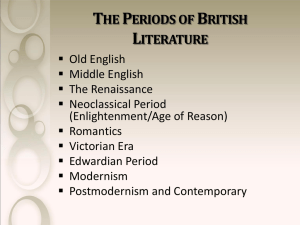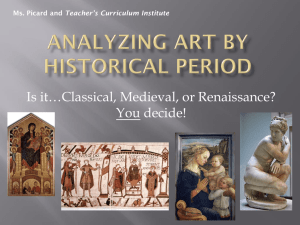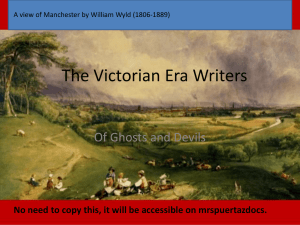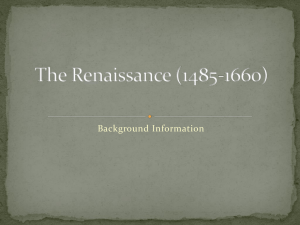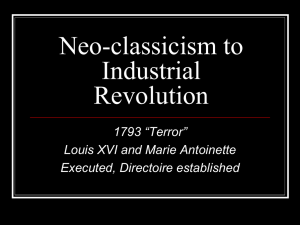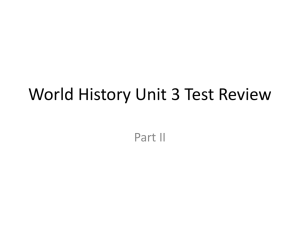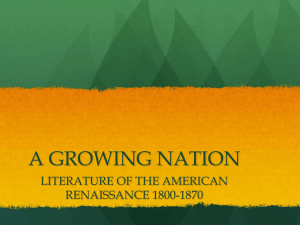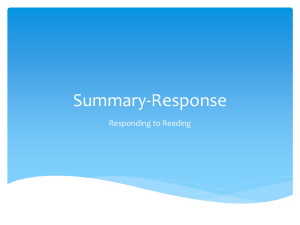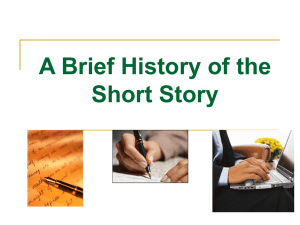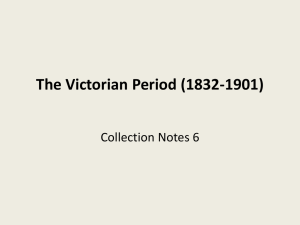Literary Periods Timeline - Stjohns
advertisement
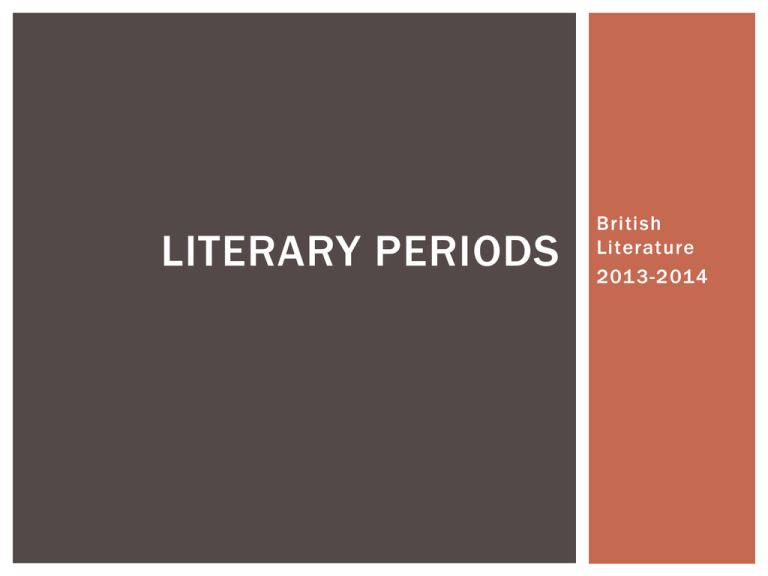
LITERARY PERIODS British Literature 2013-2014 TIMELINE OF LITERARY PERIODS (BRITISH LITERATURE) 450-1500 1660-1785 1837-1901 1914-1939 MEDIEVAL NEOCLASSICAL VICTORIAN MODERN C. 450 TODAY RENAISSANCE ROMANTIC EDWARDIAN POSTMODERN 1500-1660 1785-1837 1901-1910 1939-PRESENT • Old English or Anglo-Saxon Period (c. 450-1066) • Begins with the invasion of Celtic England by Germanic tribes and lasts until the conquest of England by the Norman-French William the Conqueror. • Major works: Beowulf, The Wanderer, The Seafarer • Middle English Period (1066-1500) • In the 15th century (1400s), literature aimed at a popular audience grew, and a range of genres emerged (chivalric romances, folk ballads, dramas, morality plays). • Major works: Sir Gawein and the Green Knight, Geoffrey Chaucer’s The Canterbury Tales TIMELINE OF LITERARY PERIODS (BRITISH LITERATURE) MEDIEVAL NEOCLASSICAL VICTORIAN C. 450 MODERN TODAY RENAISSANCE ROMANTIC EDWARDIAN POSTMODERN TIMELINE OF LITERARY PERIODS (BRITISH LITERATURE) MEDIEVAL NEOCLASSICAL VICTORIAN C. 450 MODERN TODAY RENAISSANCE ROMANTIC EDWARDIAN POSTMODERN • Also called the Early Modern Period (1500-1660) • The Renaissance refers broadly to the flourishing of the arts. • The King James Bible was written in this period. • Major works: Sir Thomas More’s Utopia, plays and poetry by William Shakespeare, prose by Francis Bacon, prose by Sir Walter Raleigh, poetry by John Milton TIMELINE OF LITERARY PERIODS (BRITISH LITERATURE) • Neoclassical Period (1660-1785) • Theatre came back into popularity, and drama typically focused on the aristocracy. • The end of this period anticipates Romanticism because it moves from topics of order and civility to instinct and feeling. • Major works: John Milton’s Paradise Lost, Isaac Newton’s Principles of Mathematics, Jonathan Swift’s A Modest Proposal and Gulliver’s Travels MEDIEVAL NEOCLASSICAL VICTORIAN C. 450 MODERN TODAY RENAISSANCE ROMANTIC EDWARDIAN POSTMODERN TIMELINE OF LITERARY PERIODS (BRITISH LITERATURE) MEDIEVAL NEOCLASSICAL VICTORIAN C. 450 MODERN TODAY RENAISSANCE ROMANTIC EDWARDIAN POSTMODERN • Romanticism (1785-1837) • Writers emphasized feeling and imagination; they looked to nature for insight into the divine. Individual experiences were highly valued. • This period featured innovations in the novel form, including the Gothic novel. • Major works and writers: Robert Burns, William Blake, William Wordsworth, Lord Byron, John Keats, Jane Austen, Mary Shelley’s Frankenstein TIMELINE OF LITERARY PERIODS (BRITISH LITERATURE) • Victorian Period (1837-1901) • Reflected a changin social, political, economic, and cultural climate. • Affected by industrialization and technological advances. • Recurrent issues included poverty, class, gender, religion • Major works and writers: Charlotte Bronte, Emily Bronte, Charles Dickens, Florence Nightingale, Robert Browning, Charles Darwin, Oscar Wilde MEDIEVAL NEOCLASSICAL VICTORIAN C. 450 MODERN TODAY RENAISSANCE ROMANTIC EDWARDIAN POSTMODERN TIMELINE OF LITERARY PERIODS (BRITISH LITERATURE) MEDIEVAL NEOCLASSICAL VICTORIAN C. 450 MODERN TODAY RENAISSANCE ROMANTIC EDWARDIAN POSTMODERN • Edwardian (1901-1910) • Refers to literature after the Victorian period and before WWI. • Refers more to historical period than literary style, so many writers are also classified as Victorian or early Modern. • Major works and writers: William Butler Yeats, Rudyard Kipling, Thomas Hardy, H.G. Wells, Joseph Conrad, George Bernard Shaw • TIMELINE OF LITERARY PERIODS (BRITISH Modern Period (1914-1939) • Spans the years betweenLITERATURE) WWI and WWII. • Works reflect the changing social, political, and cultural climate. They are diverse, experiment, and nontraditional. • Major works and writers: Wilfred Owen, TS Eliot, WH Auden, Virginia Woolf, James Joyce, DH Lawrence, William Butler Yeats MEDIEVAL NEOCLASSICAL VICTORIAN C. 450 MODERN TODAY RENAISSANCE ROMANTIC EDWARDIAN POSTMODERN TIMELINE OF LITERARY PERIODS (BRITISH LITERATURE) MEDIEVAL NEOCLASSICAL VICTORIAN C. 450 MODERN TODAY RENAISSANCE ROMANTIC EDWARDIAN POSTMODERN • Postmodern/Contemporary (1939-present) • Refers to works written after WWII, which typically reflect anxieties and reactions to life in the 20th century. Works are highly experimental and anticonventional and have become increasingly so since 1939. • Major works and writers: Seamus Heaney, George Orwell, William Golding, Graham Greene, Dylan Thomas
